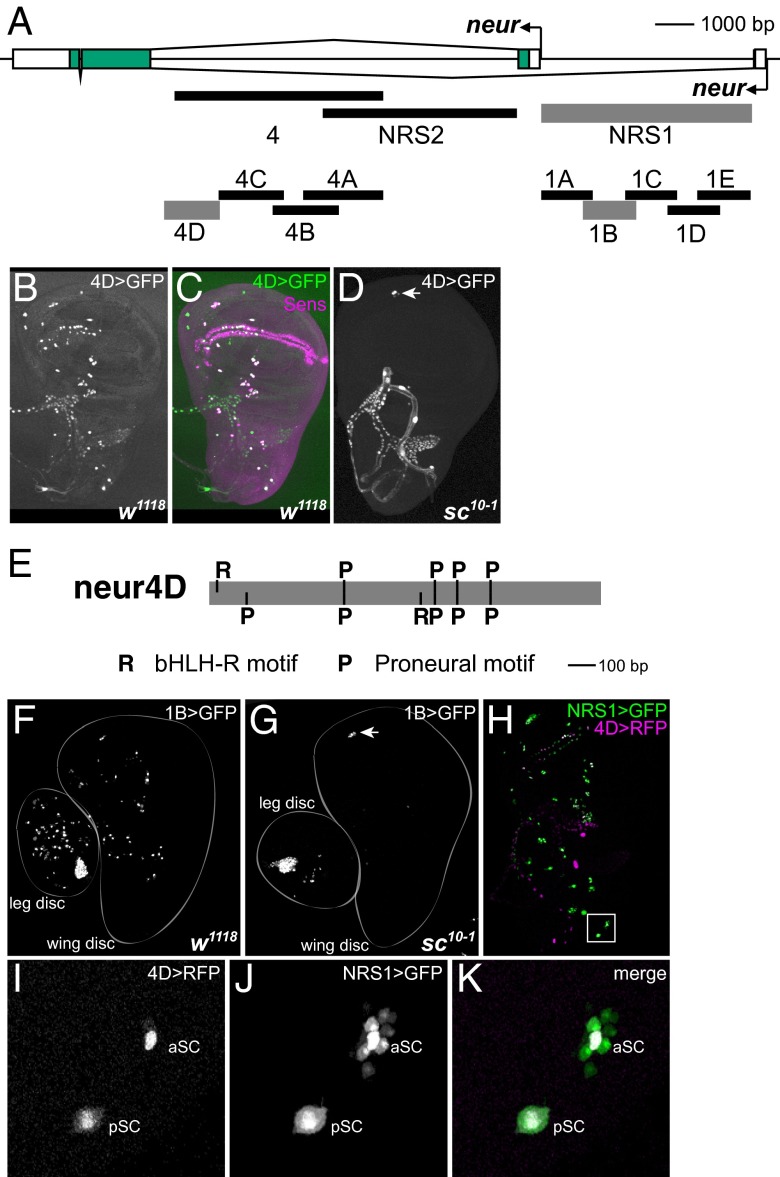Fig. 1.
neur has two separate enhancer modules with SOP specificity. (A) Diagram of the neur locus, showing genomic DNA fragments tested for enhancer activity. Three fragments for which the activity patterns are shown in this figure (4D, 1B, NRS1) are represented by thicker gray lines. Scale is shown at upper right. (B and C) The 4D enhancer fragment drives GFP reporter expression (green) specifically in SOPs of the wing imaginal disc, marked by anti-Sens antibody (magenta); this fragment overlaps enhancer fragments described by Aerts et al. (1) and Rouault et al. (3). (D) SOP activity of the 4D enhancer is lost in the sc10-1 background, which is mutant for the proneural genes ac and sc. The exception is in the ventral radius (arrowhead), where SOPs for chordotonal organs are specified by the proneural gene atonal (ato). (E) The 4D enhancer fragment includes clustered binding sites for both proneural (P; RCAGSTG) and bHLH repressor (R; GGCACGYGHY, allowing a one-base mismatch at any of the four positions flanking the core hexamer) proteins (Fig. S1). Scale is shown at lower right. (F) The 1B enhancer fragment is active in SOPs of the leg and wing imaginal discs. (G) 1B reporter expression is abolished in the sc10-1 background, again with the exception of the ato-dependent positions (arrowhead). (H–K) The 4D (red) and 1B (green) enhancers (the latter is contained within the NRS1 fragment; A) have overlapping specificities (white in K). 4D is more strongly SOP-specific, whereas 1B (NRS1) also exhibits weaker expression in a subset of surrounding non-SOP cells. aSC, pSC: anterior scutellar and posterior scutellar macrochaete positions.

